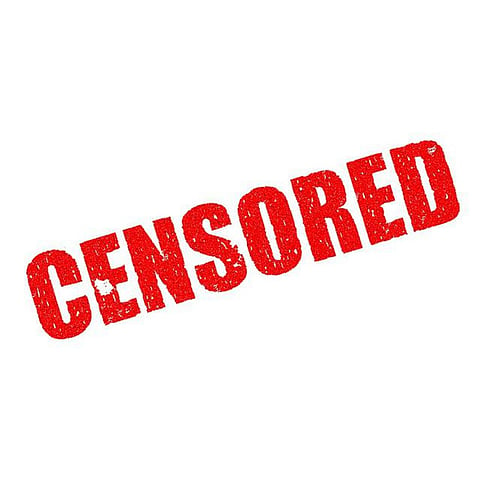
- Home
- न्यूजग्राम
- India
- World
- Politics
- Entertainment
- Culture
- Lifestyle
- Economy
- Sports
- Sp. Coverage
- Misc.
- NewsGram Exclusive
- Jobs / Internships

New Delhi, November 6, 2017: Film, as one understands, is the basis of all motion pictures and both the most persuasive and pervasive form of communication in the contemporary world. Following the development of technology, films have become much more ubiquitous and accessible. It is quite apparent that films have a lot more to them than just the purpose of entertainment. Not just a communicator of ideas, a film is also a crucial pedagogical tool that facilitates learning, spreads awareness, and motivates participation from the audiences. It is an efficient medium to help audience rethink their place in the world and to encourage them to do something for good.
Noting how influential films are as a medium of communication, the topic that
always remains hot is Censorship.
Censorship is not something that can easily be placed in the category of good or bad, in fact, both its supporters and those against it, have broken their necks to justify their arguments.
Films can change attitudes, inspire people and influence them in the deepest of ways. This was recognized long ago when the 1925 Russian film, Battleship Potemkin, was banned across the world as its story and visualization were deemed so powerful that it had the potential to arouse social outrage.
The Central Board of Film Certification (CBFC) takes charge of Censorship in India. The board commands directors to remove everything it deems as offensive, on a regular basis. The CBFC has failed to convince a large audience with the reasons that it provided for the ban of certain films in India. One of these films is "Lipstick under my Burkha" which is the most recent film to become extremely popular for its ban in India. The reason that CBFC gave for the denial of certification to the film was that it is "Lady oriented", which apparently, none can consider to be valid. If stifling the voices of women can be justified under the name of censorship, the very idea of it is threatening and must not be entertained.
Udta Punjab was also in limelight for the 94 cuts that CBFC demanded in the film, some of which included removal of the names of Punjab cities, the name of the state itself and the name of a dog which was called Jacky chain. There are many other films where the grounds on which the Censor board asked the filmmakers to cut scenes are unacceptable and sometimes plain hilarious. "Phillauri" makers were asked to mute Hanuman Chalisa as it failed to shoo the ghosts off.
The argument that the supporters of censorship usually give is that it is only in a perfect world, where children wouldn't be exposed to films inappropriate for their age, where every person recognizes the boundary between film and reality, would censorship not be necessary; but the fact is that we don't live in a perfect world. Censorship, as they call it, is just the step to protect the vulnerable in the society.
The people against censorship, however, shrug this idea off, and do not hesitate to call censorship in India, an incentive for the people in power to stay in power.
In principle, government holds a responsibility to make the art accessible to whoever is interested. However, with a country as diverse as ours, both absolute freedom and strict censorship could be problematic. The heterogeneity of citizens suggests the varying needs, sensibilities, attitudes and therefore, one needs to strike a balance.
-Prepared by Samiksha Goel of NewsGram. Twitter: goel_samiksha
